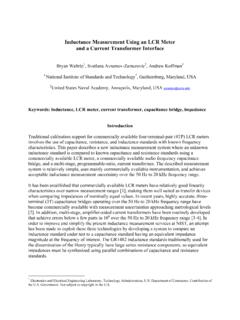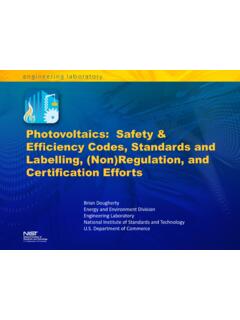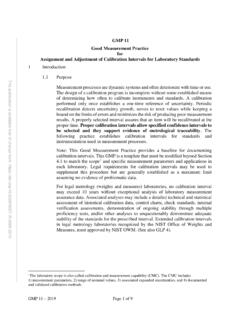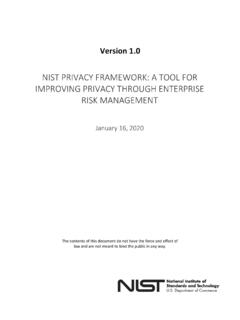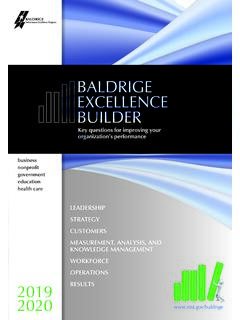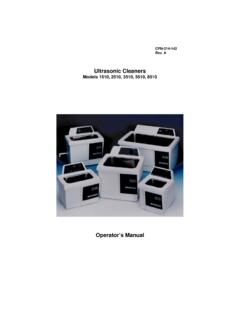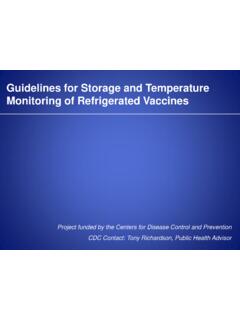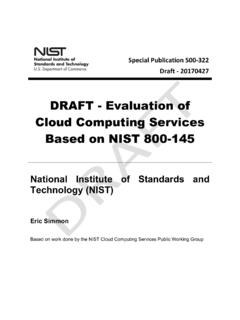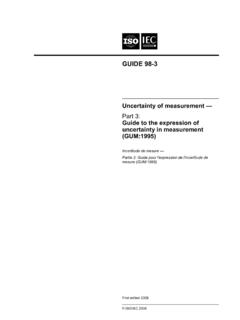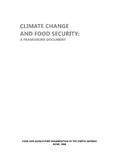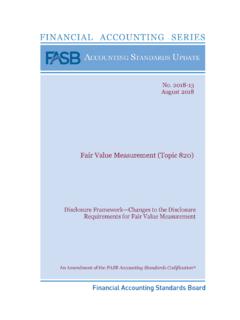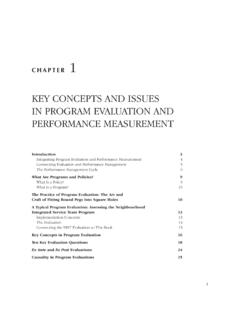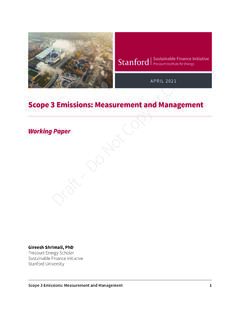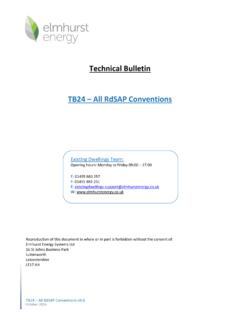Transcription of Developing a Proficiency Testing Plan for your Laboratory
1 Developing a Proficiency Testing Plan for your Laboratory Author and Presenter: Jeff C. Gust Vice President Quametec Proficiency Testing Services 501 W. Van Buren St Columbia City, IN 46725 (260) 244-7450 Abstract Whether responding to new requirements from accreditation bodies, or ensuring that your Laboratory quality system meets the requirements of ISO 17025, Developing a documented plan for Proficiency Testing benefits the Laboratory . Formal development of a Proficiency Testing Plan provides a long term roadmap for laboratories to ensure validation of all calibration services that they provide, and conveniently summarizes corrective and preventive actions that result from participation in Proficiency Testing .
2 When Developing a Proficiency Test Plan, it is important to optimize the costs to the Laboratory by ensuring that the minimum requirements are met and the entire technical scope of the Laboratory is covered in the required timeframe. This presentation will discuss the Proficiency Testing requirements from the International Laboratory Accreditation Cooperation, through the regional accreditation organizations, to the accreditation bodies, and the Laboratory itself. Information will be shared on the development of the NIST Weights and Measures Division Proficiency Test Policy and Plan that was jointly developed by NIST and Quametec Proficiency Testing Services.
3 Examples of Proficiency Testing Plans for laboratories will be provided. What is a Proficiency Test? A Proficiency test (PT) is simply, a method that you may use to validate a particular measurement process. The artifact s reference value is not known by the participating Laboratory at the time of its measurement (test). In a well designed Proficiency test, the reference value for the artifact should be principally determined by a competent Laboratory with appropriate traceability to the International System of Units (SI). The reference Laboratory should also have demonstrated its competency though key comparisons, interlaboratory comparisons, or Proficiency tests appropriate to validate their measurement capability.
4 It is also preferable that the Laboratory has had its competency independently assessed through the process of Laboratory accreditation. Lastly, in order to appropriately validate the measurement capability of the participating Laboratory , the uncertainty assigned to the artifact by the reference Laboratory should be sufficiently smaller than the expanded uncertainty reported by the participating Laboratory . Why does my Laboratory need a Proficiency Testing Plan? Regardless of the standard that your calibration Laboratory s quality system is based upon, Proficiency Testing is an excellent way to validate one s measurement processes.
5 Proficiency tests can validate the participating Laboratory s measurement method, technical training, traceability of standards, and uncertainty budgets. Even though the Laboratory has been most rigorous in Developing the aforementioned Laboratory processes, it is important to use Proficiency Testing as an additional way to verify that all aspects of the Laboratory measurement system are sound. For laboratories that must either comply to or be accredited to ISO 17025, this document provides specific guidance why Proficiency Testing is important, and why it is preferable to develop a Proficiency Testing Plan.
6 Section of ISO 17025, Assuring the quality of test and calibration results, states that the Laboratory is required to have procedures to monitor the validity of calibrations. The Laboratory is required to plan and review the monitoring process. This section goes on to suggest several ways to accomplish the monitoring, one of which is participation in Proficiency tests. Proficiency Testing and the Accreditation Process In order for a calibration Laboratory to be accredited to ISO 17025, the accreditation body often has specific requirements for participation in Proficiency tests. Before discussing specific accreditation body Proficiency Testing requirements, it is helpful to understand why Proficiency Testing is required to be accredited.
7 In order for an accreditation body to be eligible to enter into a Mutual Recognition Arrangement (MRA) with the International Laboratory Accreditation Cooperation (ILAC) or a regional accreditation cooperation such as the Asia Pacific Laboratory Co-operation (APLAC), the accreditation body must develop a quality system which meets the criteria for recognition. ILAC provides the procedure ILAC P1:2003 ILAC Mutual Recognition Arrangement Requirements for Evaluation of Accreditation Bodies by ILAC Recognized Regional Co-operations which sets forth the requirements for entry into a MRA. ILAC P1:2003 specifies in section 5, Criteria for Evaluation, requirements of Proficiency Testing activities that the accreditation body must require of laboratories that they accredit.
8 Section recommends that at a minimum, laboratories successfully participate in at least one Proficiency test prior to gaining accreditation and one Proficiency test relating to each major sub-area of major disciplines of a Laboratory s scope of accreditation during a four-year period. Regional organizations such as the National Cooperation for Laboratory Accreditation (NACLA) and the Asia Pacific Laboratory Accreditation Cooperation (APLAC) further clarified the requirements of ILAC P1:2003 within their quality system documents. For example, APLAC MR0001 Procedures for Establishing and Maintaining Mutual Recognition Agreements Between Accreditation Bodies Section requires accreditation bodies to specify that accredited laboratories participate in a minimum of one Proficiency test prior to accreditation and one Proficiency test for each major sub-area of major disciplines of a Laboratory s scope of accreditation at least every four years.
9 The following paragraphs summarize the Proficiency Testing requirements of some of the major accreditation bodies in the United States. This is not a complete listing of all accreditation bodies, so if your accreditation body is not included in this list, please contact your accreditation body for Proficiency Testing requirements. PT Requirements A2LA Some accreditation bodies such as the American Association for Laboratory Accreditation (A2LA) have supplemented the ILAC recommendation by requiring laboratories participate in a minimum of two Proficiency tests per year and cover all major sub-disciplines of the Laboratory technical scope every four years (Document - A2LA Proficiency Testing Requirements January 1, 2004) in addition to the requirement of successfully completing at least one Proficiency test prior to obtaining accreditation.
10 A2LA also requires that accredited laboratories have a documented plan of how they intend to cover their technical scope during the four year period. Details of the documented plan requirements will be discussed later. At the time of writing this paper, A2LA has not defined major sub-disciplines as it relates to calibration laboratories. PT Requirements NVLAP The National Voluntary Laboratory Accreditation Program (NVLAP) most recent version of Handbook 150 has no specific minimum Proficiency Testing requirements, but NVLAP has published two documents in the 150-2 series (150-2C technical guide for time and frequency measurements and 150-2E technical guide for optical radiation measurements) do specify that 1 Proficiency test is to be completed per year per field, where a field is represented within the specific document such as 150-2C or 150-2E.
